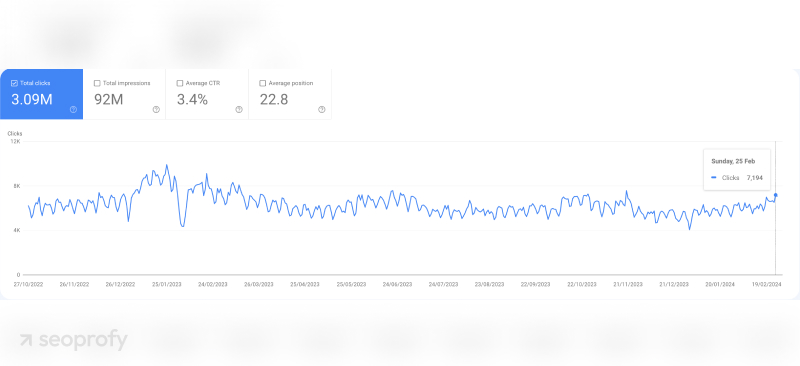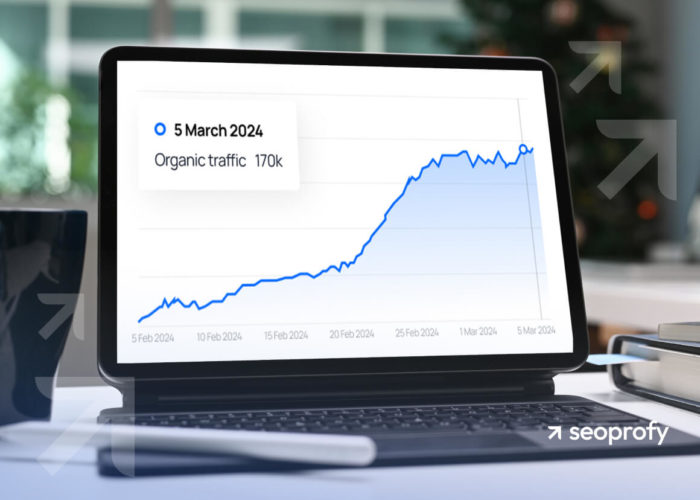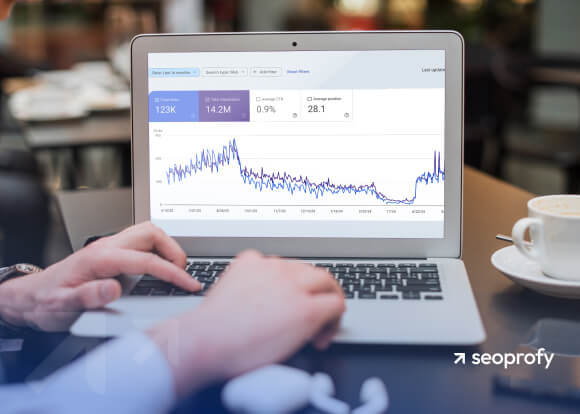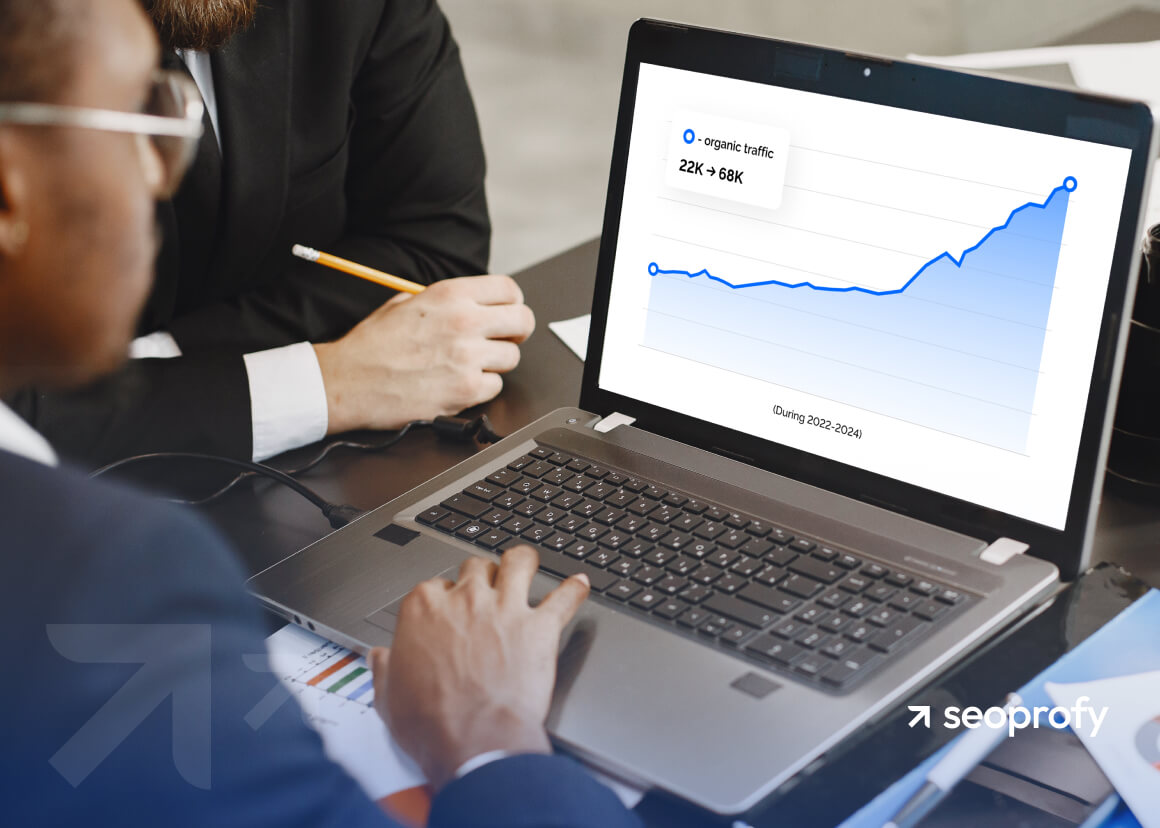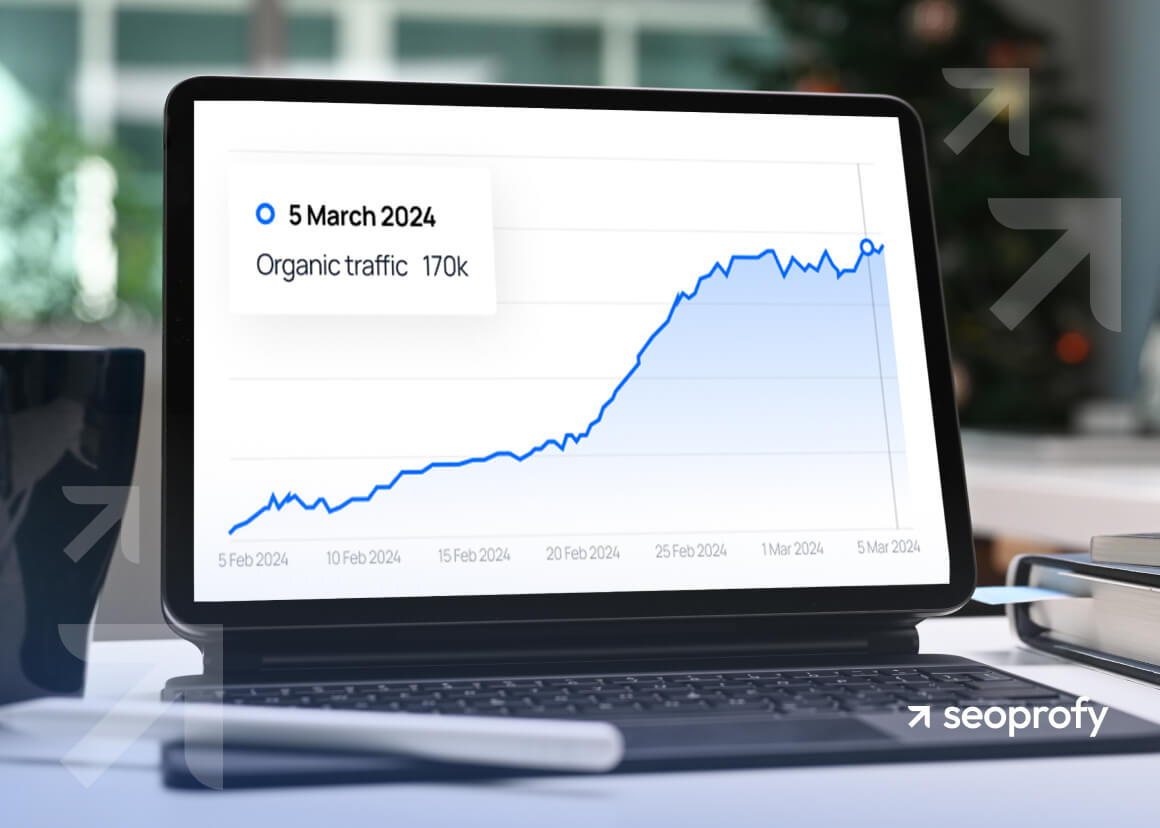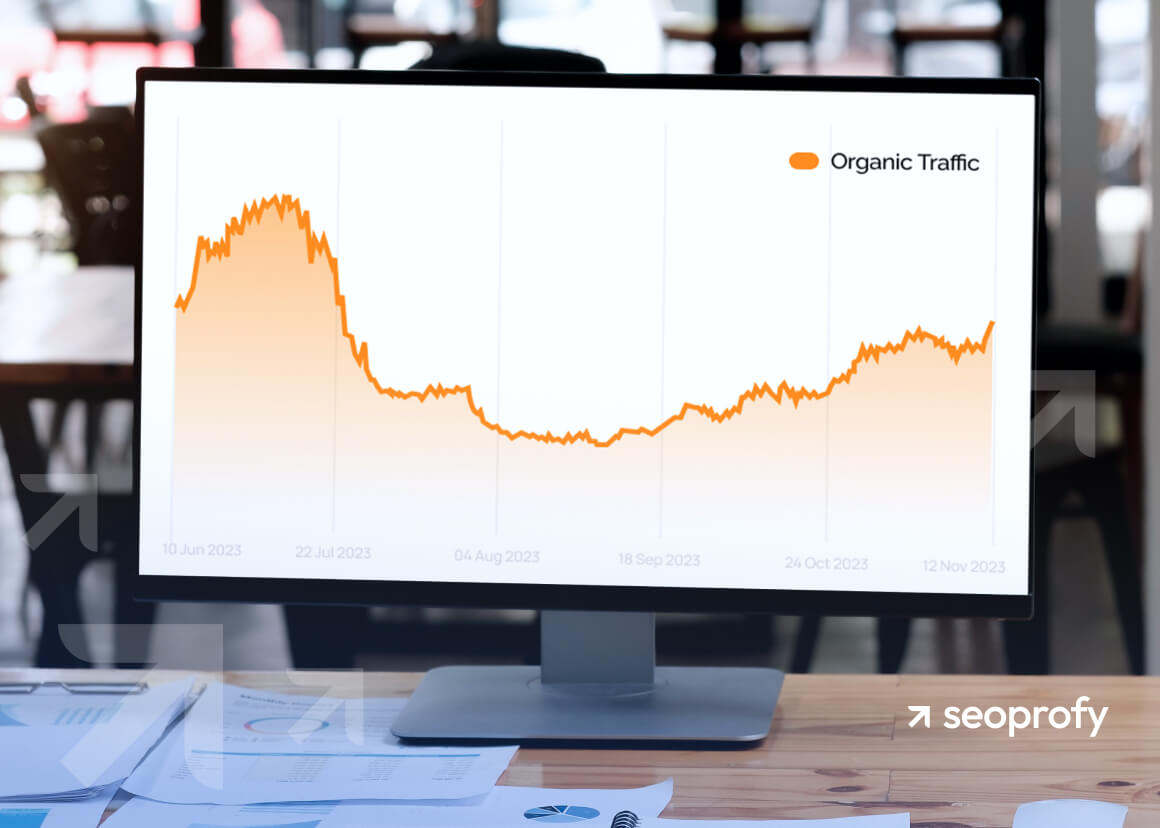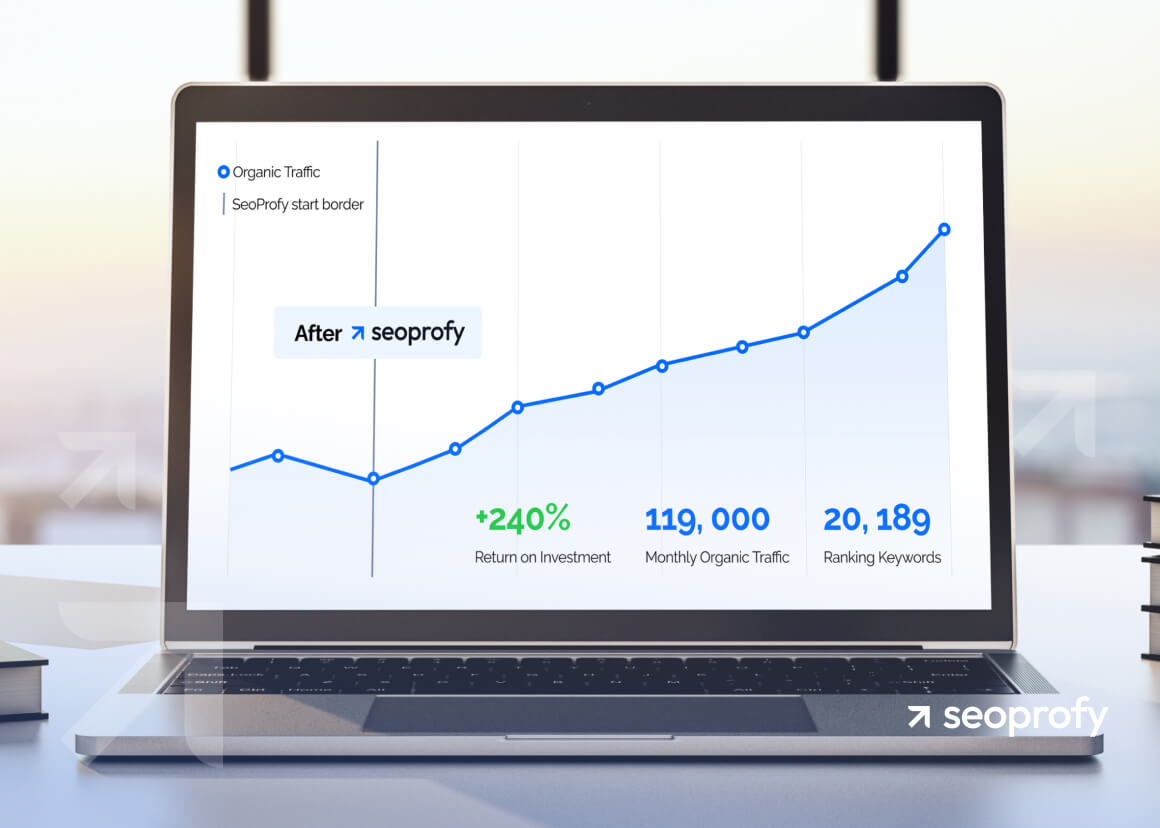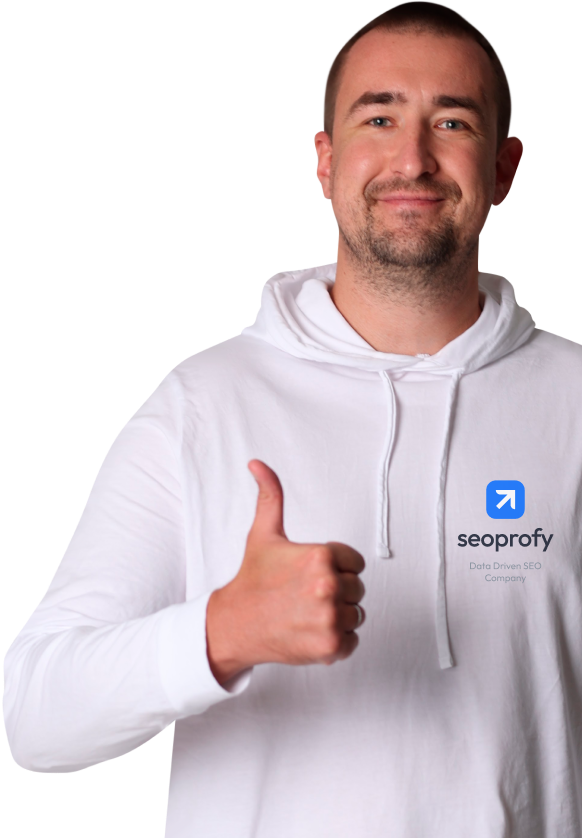2021: Starting Point
| Domain Age | 1 year |
| Niche/Market | Gambling |
| Target Countries | Canada, New Zealand |
| Target Language | EN |
| Daily Organic Traffic | 0 |
| Backlink profile | 3 Referring Domains |
| Pages | 2K |
| Monthly Budget | $9500 |
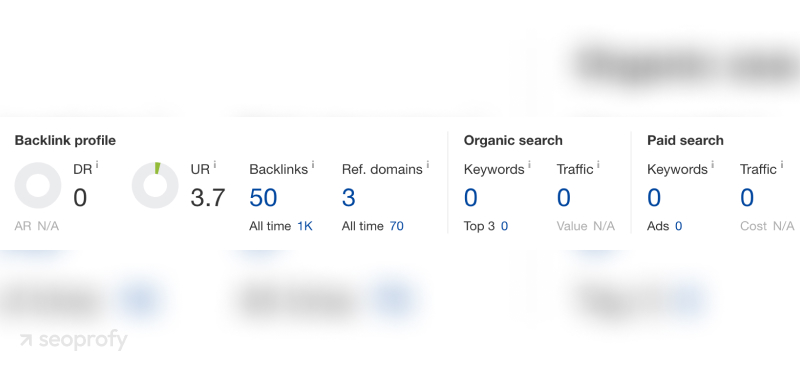
Challenges
The client wanted to start getting organic traffic from target keywords. The goal was to achieve 5K clicks a day in two years.
We calculated and planned a gradual increase in traffic. Based on these metrics and whether they were achieved, the objectives would be corrected as needed. The traffic had to be targeted and lead to conversions (first-time deposits).
Part 1: How We Reached 160K in Organic Traffic in 1.5 Years
We started our cooperation with the client in April 2021. At that time, the website had no traffic, only three referring domains, and about 2K pages.
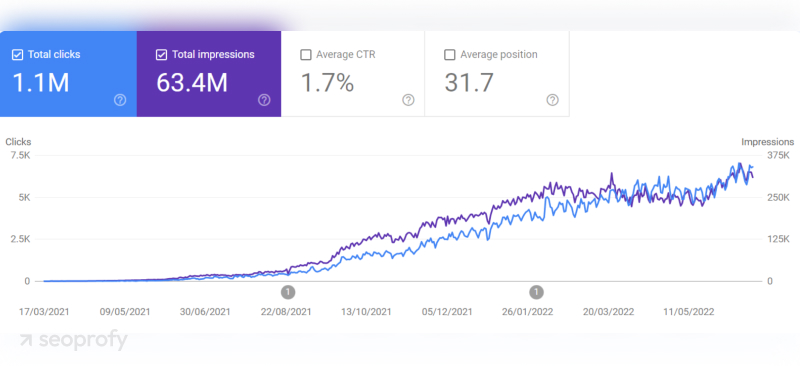
Main Issues
Technical
- The website was newly created. The client chose WordPress as its CMS, but it was a custom solution overall.
- Some functionalities had not yet been added (that is, the development was still in progress when our cooperation started).
- The “hreflang” attribute was set up without taking into account the target countries: Canada and New Zealand.
- Site speed was significantly lower than that of all competitors in the niche.
Content
- Numerous pages had either generated content created with a template or practically no content.
- The site lacked some meta-tags.
- Not all templates for meta-tags were well-thought-out.
Link Building
- The client had not started building links yet.
Project Strategy
First, we created a team based on the data and the preliminary audit of the website. The team included:
- 1 SEO team lead
- 2 link builders
- 1 project manager
- 1 content manager (part-time).
All of them already had experience in this niche when they started working on the project.
Niche Analysis
We analyzed the client’s niche in the priority regions (Canada and New Zealand), which allowed us to determine the most relevant competitors. Further analysis of these competitors gave us a clearer understanding of the main weaknesses of the client’s site, which included:
- The structure of the website: It lacked some categories that attracted a lot of organic traffic to competitor websites.
- Internal linking: Internal links were implemented poorly and illogically, especially when compared to the top websites in the field.
- Link building: There was no link building strategy, and the site was not getting any backlinks. That’s why we also analyzed the competitors’ link building strategies during the niche analysis.
Technical SEO Audit
At the same time, we did a technical audit of the website, during which we found the following issues:
- Duplicate pages
- Orphan pages (only links from the sitemap were pointing to them)
- Low site speed, which also impacted Googlebot’s crawling and, as a result, the indexation of our pages
- Problems with canonicals (pages for the same games were available at different addresses)
- All pages were included in the sitemap, regardless of whether they were supposed to be indexed or not
- Numerous pages had duplicated H1s
- Most pages didn’t have meta descriptions
- Most images had no alt text.
Action Plan
With all the data from the niche analysis and the technical SEO audit on hand, we created a personalized SEO strategy for this website. It included a considerable amount of work, so it was critical to prioritize the tasks to see positive shifts in the organic traffic metrics and rankings sooner.
That’s why we crafted an action plan with clearly defined priorities. All technical tasks were divided into three priority levels: high, medium, and low. Depending on the priority, we set approximate timelines for implementing those changes.
The main steps in our plan were as follows:
- Set up the language versions.
- Fix the issues related to the canonical attribute.
- Configure automatic sitemap generation that would only include the pages that should be indexed.
- Complete the site structure with necessary categories according to the niche analysis.
- Fix and improve internal linking.
- Optimize site loading speed and the functionality of the server in general.
- Improve the indexing of the site and increase it to 95%+.
- Analyze the existing content and provide recommendations for its optimization.
- Create instructions for content creation for the pages that have no content.
- Create optimized meta-tag templates.
- Add E-E-A-T elements according to the findings from niche analysis.
- Start acquiring backlinks according to a clear link building strategy.
Strategy Implementation
Language Versions
In order to implement correct locale-specific versions, we set up the “hreflang” annotations like this:
- <link rel=”alternate” href=”https://site.com/” hreflang=”en-ca” />
- <link rel=”alternate” href=”https://site.com/nz/” hreflang=”en-nz” />
As you can see in the screenshot below, this started bringing positive results in about a month.
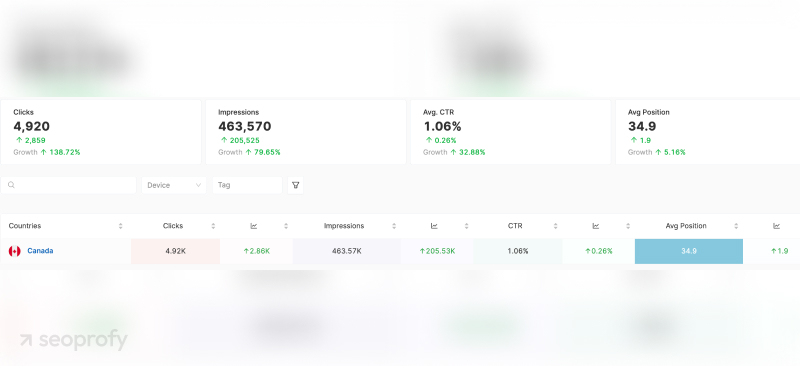
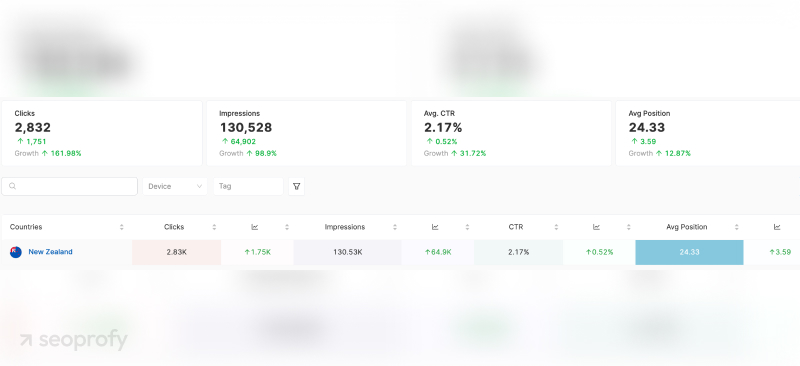
Canonicals
During the technical audit, we found issues with the canonical tag implementation. Here’s an example:
URL: https://site.com/category/page/
<link rel=”canonical” href=”https://site.com/page/” />
There were also situations where the canonical attribute was not self-referencing.
In the screenshot below, you can see how the number of duplicate pages was gradually reduced as we worked on fixing the issue. We submitted all these pages for indexation through Google Indexing API to speed up the process.
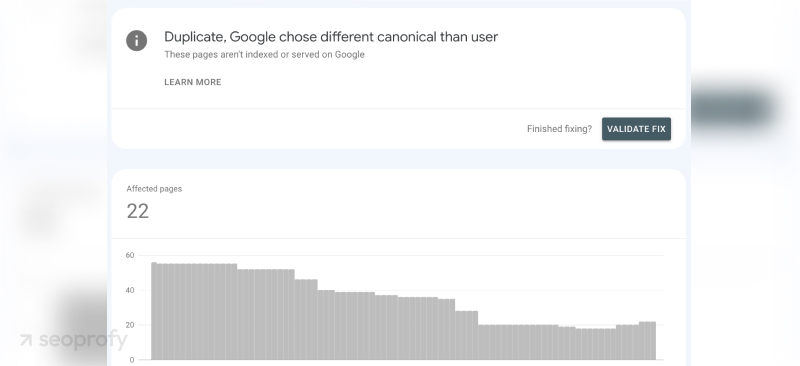
Sitemap
For each language version, we set up automatic sitemap generation. We configured it in a way that prevented pages with response codes other than 200 or those with the robots meta tag set to “noindex” from being included in the sitemap.
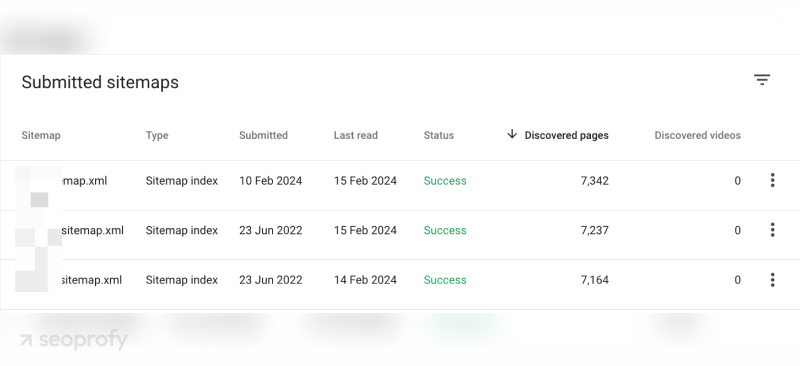
We also divided pages into two sitemap index files so that each of them contained no more than 1K pages. This made indexation monitoring more convenient.
Once the site speed, canonical, and sitemap issues were solved, the indexation of the website improved considerably.
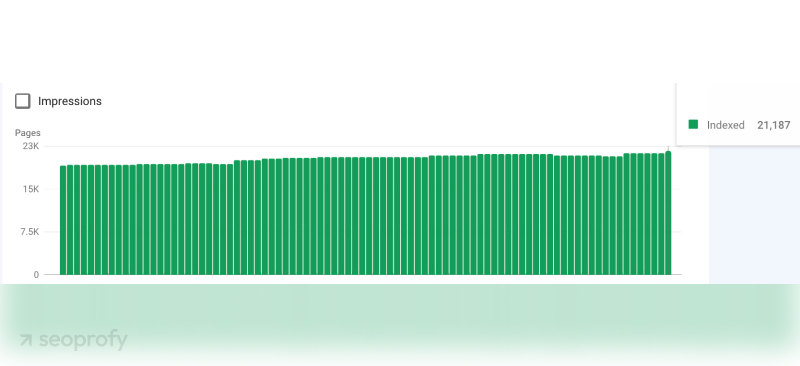
Content
Here, we performed a colossal amount of work in two areas: optimizing the existing content and creating new content. The majority of the new content was created by our copywriter, who is still working on the project. Although we created detailed content briefs, it was important to have a writer with a high level of expertise in the field for the best results.
We came to two important conclusions when working on the content for this project:
- If you create a lot of new content, all plagiarism checkers will show that your texts are almost 100% unique because your other content has not been published yet.
- It is better to regularly involve other writers in the process so that your main writer doesn’t burn out.
Next, we focused on high-priority pages. We started constantly monitoring their rankings and updating their content.
Site Speed
Speed optimization also required a comprehensive overhaul of the website. To get closer to the competitors’ results—and to outperform them—we did the following:
- Connected and configured CDN Cloudflare
- Converted the images to the WebP format
- Set up and optimized caching
- Postponed the loading of low-priority JS scripts
- Made numerous changes to server optimization.
As a result, we got a more stable website performance under a high load and improved the PageSpeed Insights metric to reach the level of the top competitors.
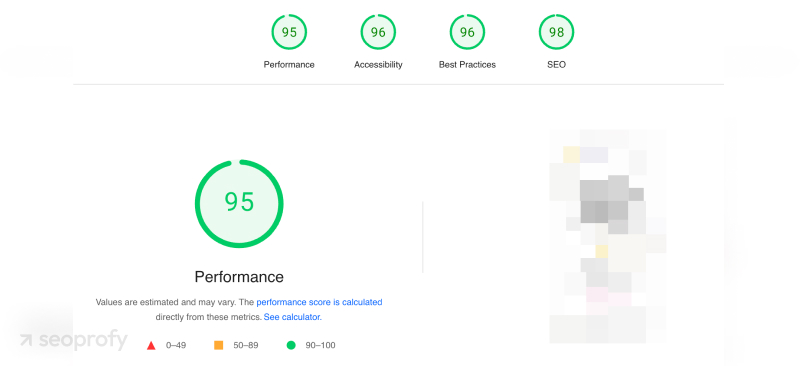
E-E-A-T
Due to the NDA, examples for this subsection were taken from competitor websites.
After the niche analysis, we determined a range of elements that contributed to E-E-A-T factors and were present in competitors that reached the top ten rankings. The client’s website lacked some of the contributing factors, so we decided to add them. These included:
- The author’s biography and links to their social media
- A separate author’s page with a list of their publications and a short description that shows their expertise
- Schema markup for the author, editor/reviewer, and update date page elements
- Sections that described why readers could trust us and what methods we use
- Pages like Editorial Guidelines, Advertiser Disclosure, Risk Disclosure, Responsible Gambling, etc.
Examples from Casino.org:
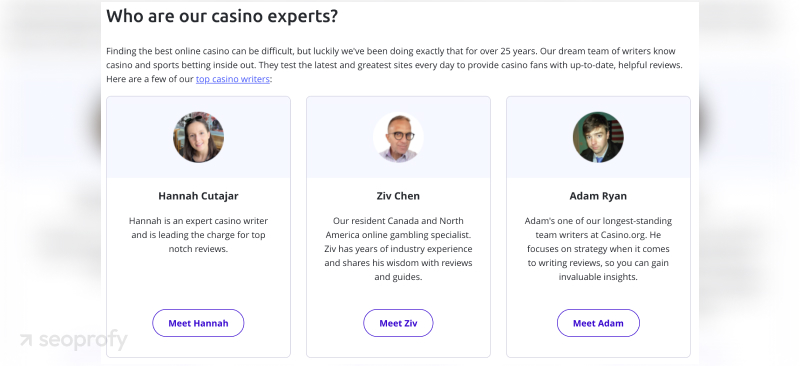
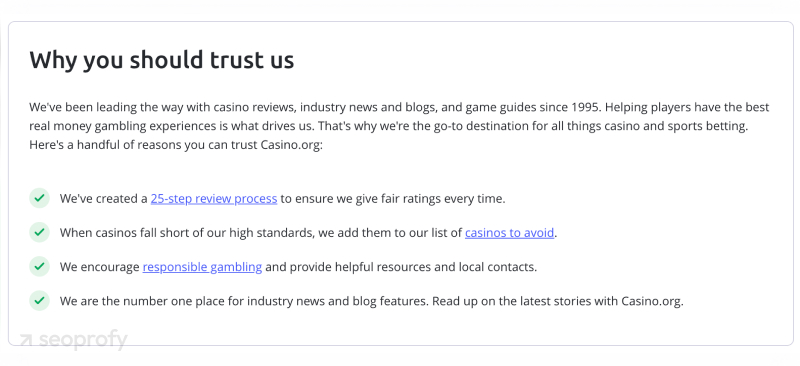
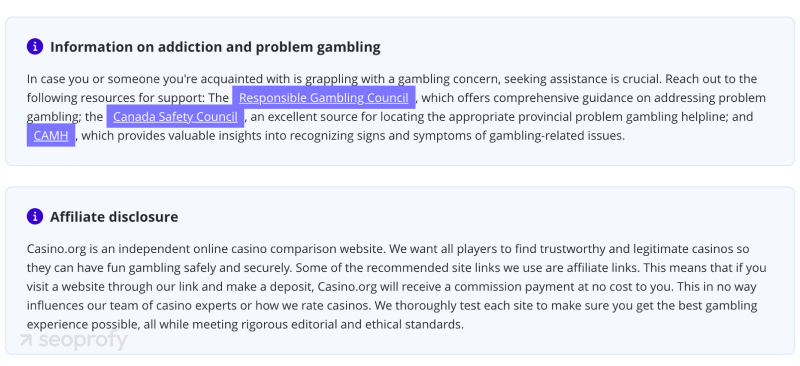
Link Building
Because this was a newly created website, there was no link building strategy yet. So, we started with the following metrics:

Considering the peculiarities of the market and the target region, we created a strategy that focused on these aspects:
- Whenever possible, we would try to build backlinks from the relevant region for each language subdirectory (/CA/, /NZ/). This was especially important at the beginning.
- For the first quarter, at least 70% of backlinks had to come from domains that either were registered in the targeted countries or had those countries among their top five traffic sources.
- This rule would apply to both outreach link building and submission backlinks.
- Backlinks to the homepages specific to Canada and New Zealand had to constitute about 50% of the backlink profile.
Here is how the top results looked in 2021 in Canada:
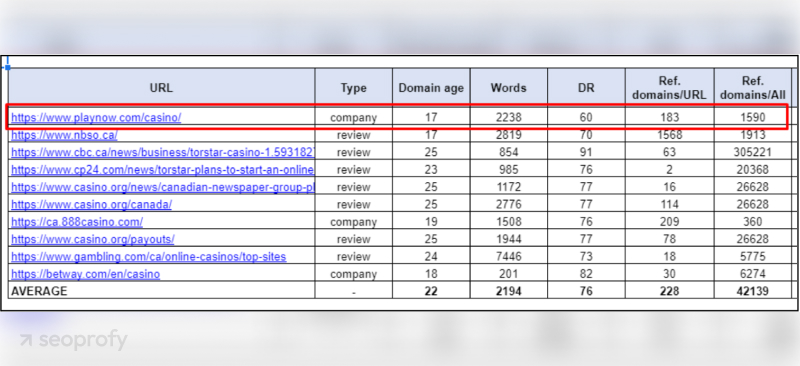
And in New Zealand:
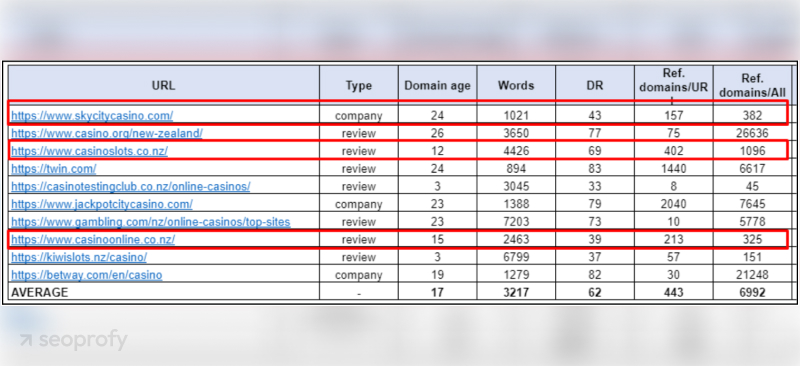
It’s also important to consider the average domain age. The youngest website that was getting traffic from high-frequency keywords was three years old.
We carefully selected websites for our link building efforts according to these metrics:
- DR (Ahrefs): 28+
- Organic traffic: At least 1K
- Website traffic by country: Canada and New Zealand had to be in the top five countries
- Linked domains to referring domains (LD/RD) ratio: <1.5
Here is how our backlink growth dynamics looked after 1.5 years:
Ahrefs:
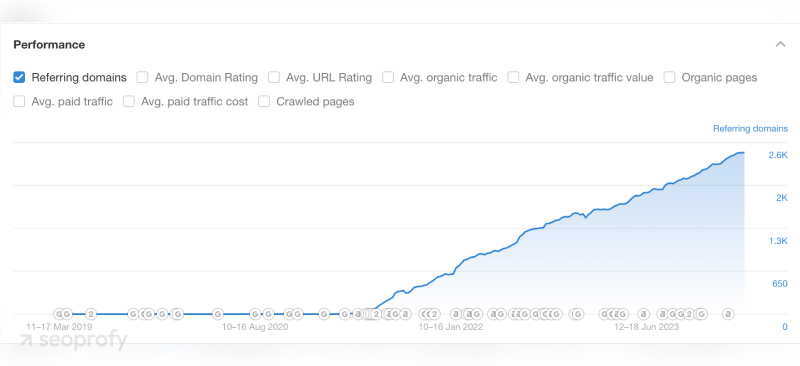
LinkChecker:
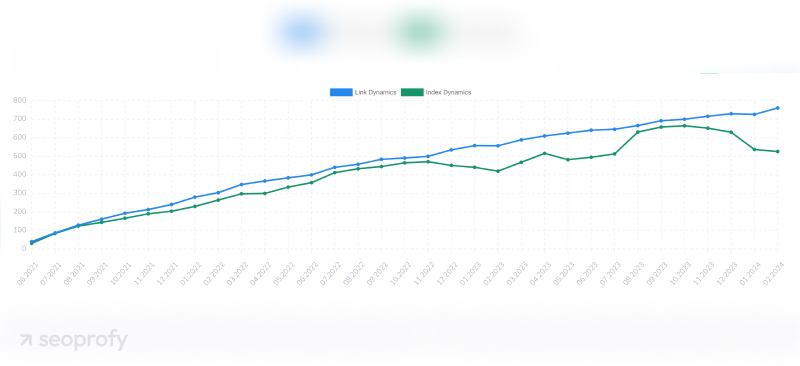
Results
After a year and a half of our cooperation, the client’s website started receiving about 5-6K clicks per day. We achieved and even exceeded the goals set at the start and got the following results:
Google Search Console:

Ahrefs + Google Search Console:
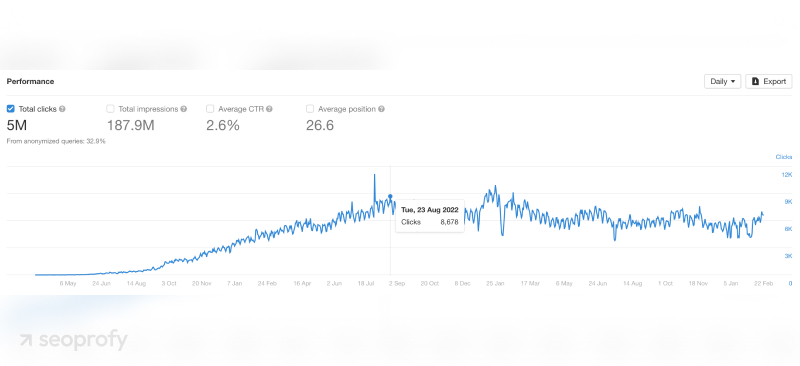
Part 2: Bringing Back Organic Traffic After Google’s Helpful Content Update in August 2022
Even with those great results, our work was still not over—which proves that SEO is an ongoing process. In August 2022, Google implemented its Helpful Content Update, which led to a considerable traffic drop for the client’s website.
Ahrefs:
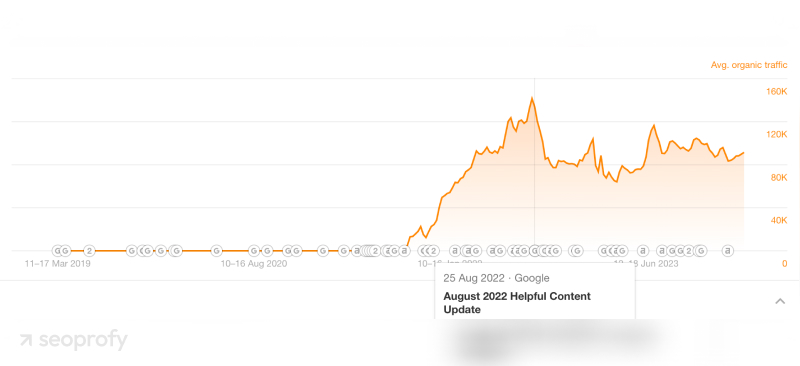
Google Analytics:
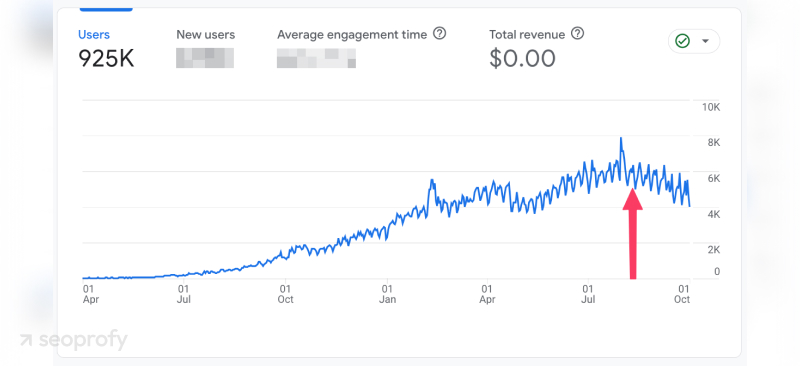
The traffic amount decreased from 6-7K to about 5K clicks a day, as we can see in this screenshot:
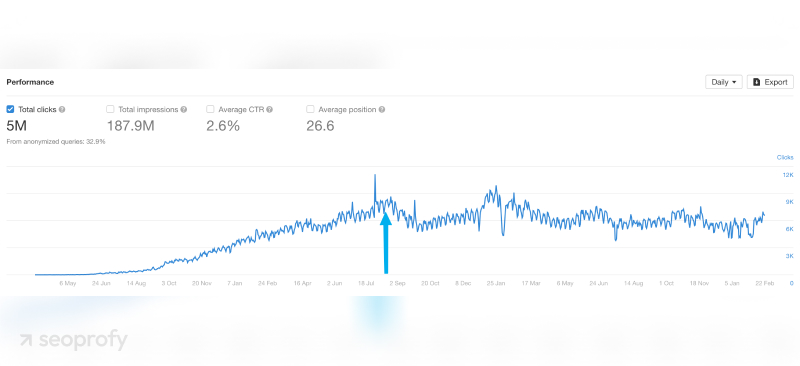
Seeing these consequences, we understood that we had to adjust our strategy. Thus, we started analyzing our previous actions to determine the reason for this drop and find the right solutions.
What We Analyzed
First and foremost, we looked at the niche in general and at our direct competitors. We wanted to determine the winners and losers in the niche after the update and understand why their rankings changed. It was important to analyze the competitors who started to outrank us for our priority keywords and what helped them reach those positions.
Next, we focused on the competitors that preserved or even improved their organic traffic dynamics (according to Ahrefs and Semrush). We studied everything they did over the last couple of months. At the same time, we analyzed our website and the changes we implemented.
Upon reviewing everything we did from the beginning of our cooperation with the client, we didn’t find anything that could potentially lead to such negative results after the update. We also double-checked all the referring domains in our backlink profile, but at that point, we had already disavowed all low-quality backlinks.
To ensure a thorough analysis, we used all the available tools, including Ahrefs, Semrush, Google Search Console, Bing Webmaster Tool, and our in-house tool, SearchAnalytics. They showed nothing suspicious — the website had no redirects, and there were no spammy backlinks or other negative SEO attacks through which competitors could influence the performance of our site. It was also unlikely that this would coincide with the update.
So we kept looking for a possible reason on the website itself. The pages that lost the most traffic were well-optimized. There were no technical issues. In terms of link building, the anchor text list looked natural.
However, as we looked deeper, we found that we created numerous pages that were to be filled with content later. They were added together with priority pages but only contained a small amount of spun content. Such pages constituted a significant part of the website at that moment, about 30%.
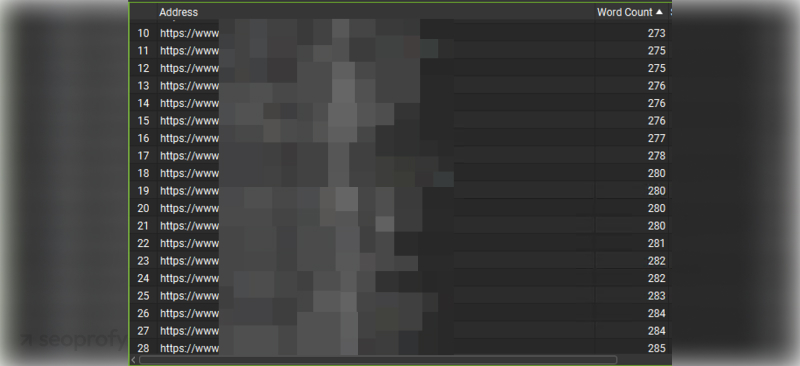
Our Solutions
We decided to keep these pages in the index and fill them with content that we planned to add within the following months as soon as possible. At the same time, we agreed to add the “noindex” tag to all the newly created pages without the necessary content.
While solving this issue, we continued implementing the strategy that we created at the beginning of our cooperation with the client. We didn’t have to change the primary plan that much, only adjusting it according to the regular competitor analysis.
Results
After three years (and counting) of fruitful cooperation, we achieved the following results:
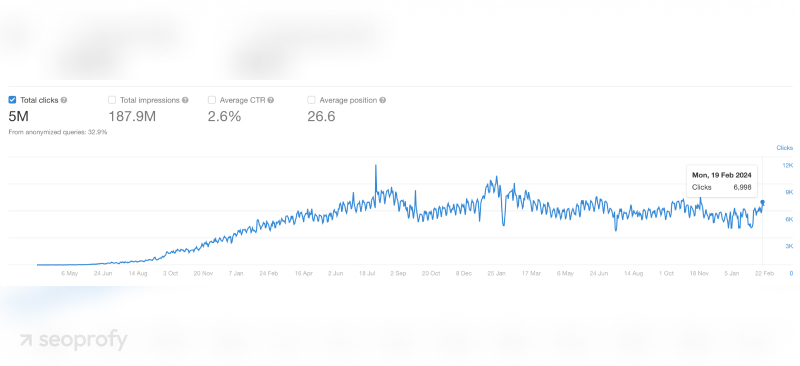
As of today, the website has about 170-180K of estimated organic traffic per month. According to Ahrefs, the traffic value is $99K.
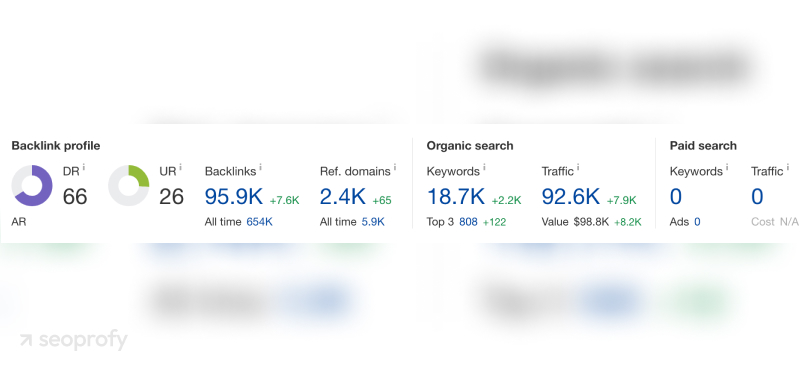
Google Search Console (last 16 months):
